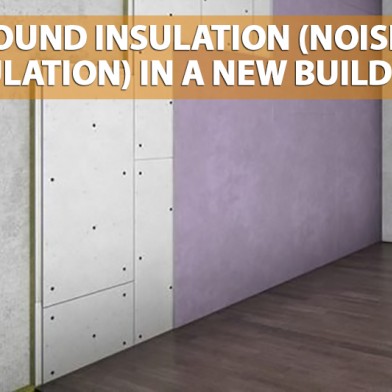Soundproofing (soundproofing) in a new building
- 23 September 2020 18:46:49
- Reviews: 0
- Views: 942
-

Often, in modern new buildings, the developer offers the owners only a “box” of an apartment, where the main communication systems (electricity, hot and cold water, heating, gas) are connected. However, with regard to sound insulation (sound insulation) in a new building, then, as a rule, the newly minted owners deal with this issue on their own. Relevant construction work in the apartment can be done independently, or hired employees can be involved in this. However, the most important thing is to choose the noise reduction technology and appropriate materials.
Before you perform soundproofing (soundproofing) in a new building, you need to understand that providing a “ringing” silence in an apartment is also unacceptable, as is the lack of appropriate insulation. Therefore, in this matter, you need to be guided by common sense, and it makes sense for lovers of exact values \u200b\u200bto turn to the Construction Norms and Rules (SNiP) for background information. Most often, walls in new buildings are isolated from noise with the help of a special sound-absorbing material, OSB-boards, chipboard boards, or plain drywall. For the installation of such sheets, it makes sense to use not ordinary installation structures, but special vibration fasteners, which, among other things, are designed to absorb sound vibrations emitted by the materials fixed to them.

When using sound-absorbing materials (eg various polyurethanes), attention must be paid to their thickness. This is done so that the specified material does not “steal” the area in the apartment and reduces the living space. The standard thickness of soundproofing materials is about 10…50 mm. Many of these materials have a double-sided self-adhesive surface, which increases the convenience of their installation.
As for the soundproofing of the ceiling, it is definitely not worth using the so-called soundproof stretch ceilings so advertised today. They show low efficiency, but at the same time they are quite expensive. Instead, it makes sense to use a combination of drywall and soundproofing materials (polyurethane) to soundproof the ceiling in a new building. This combination in practice has shown its effectiveness in sound absorption in the apartment.
For soundproofing the floor, the best option would be to use soundproof foam rubber, which has a high density. This material is laid on the floor, and a concrete screed is poured on top. The high efficiency of this combination has been repeatedly tested.


